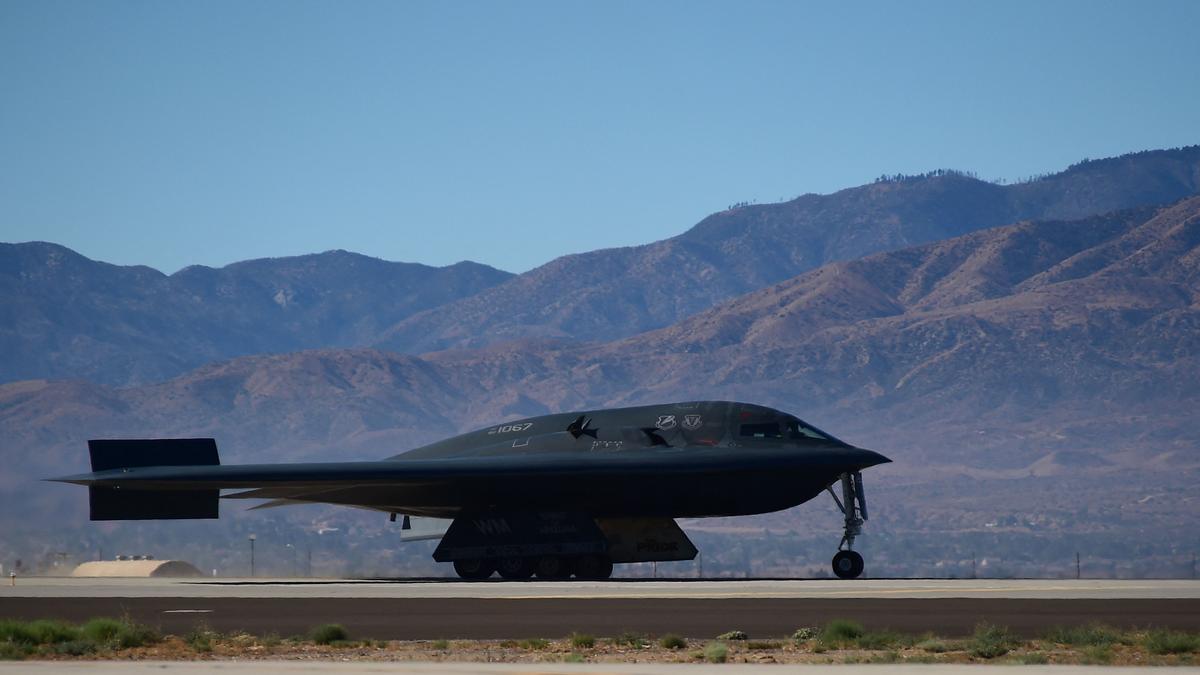US Army launches B-2 stealth bombers to target underground bunkers Yemen’s Houthi rebels Early Thursday (Oct. 17, 2024), there was a major escalation in the US response to insurgent attacks on Middle East shipping lanes, which also appeared to be a warning to Iran.
Although it was not immediately clear how much damage the strikes caused, it appeared that the strike was the first use of the B-2 in combat in years and the first time the flying wing had targeted sites in Yemen.
In announcing attacks against the Houthis, who have been Attacked ships in the Red Sea corridor for months On the Israel-Hamas war in the Gaza Strip, US Defense Secretary Lloyd Austin sounded a warning to be heard even in Tehran.
Austin said, “This was a unique demonstration of the United States’ ability to target facilities that our adversaries wish to keep inaccessible, no matter how deep underground, hardened, or fortified they are.”
Iran, the Houthis’ main patron, has targeted Israel with ballistic missile attacks twice in the past year. The B-2 would be used in any US attack on hardened Iranian nuclear facilities such as Natanz or Fordow, as it is the only aircraft in service that can shoot down the GBU-57, known as the “giant warhead penetrator” .
Iran had no immediate comment on Thursday’s attack. Its foreign minister is visiting Arab countries ahead of a possible Israeli response to Tehran’s October 1 missile attack.
The Houthis’ al-Masirah satellite news channel reported airstrikes around Yemen’s capital, Sanaa, which the group has held since 2014. They also reported attacks around the Houthi stronghold of Saada. He did not immediately provide any information on damage or casualties.
Austin said the B-2 bombers “targeted five hardened underground weapons storage locations in Houthi-controlled areas of Yemen.” Both he and the US military’s Central Command gave no immediate assessment of the damage caused. However, Central Command said it believed no civilians were killed.
The Red Sea has become a battleground for ships as the Houthis launched their campaign to target ships traveling through the waterway that once carried $1 trillion of cargo annually.
The Houthis have targeted more than 80 merchant ships with missiles and drones since the war in Gaza began in October 2023. They seized one ship and sank two in the campaign, killing four sailors. Other missiles and drones have either been intercepted by the US-led coalition in the Red Sea or failed to reach their targets, including Western military ships.
The rebels say they target ships belonging to Israel, the United States or the United Kingdom to end Israel’s campaign against Hamas in Gaza. However, many of the ships attacked have little or no connection to the conflict, with some bound for Iran.
The Houthis also continued to launch missiles at Israel and shot down a US military MQ-9 Reaper drone. Rebels have threatened new attacks in response Israel’s ground attack on Lebanon and its Murder of Hezbollah leader Hassan Nasrallah,
Hamas’ initial October 7, 2023 attack on Israel sparked the war, killing about 1,200 people and taking 250 others hostage. Israeli military actions since that time have killed more than 42,000 Palestinians in the Gaza Strip, hundreds in the West Bank and more than 2,300 in Lebanon. Meanwhile, the fighting has moved ever closer to full-scale regional war.
The locations disclosed by the Houthis on Thursday match known underground bases operated by the rebels, who have been locked in a stalemate war with the Saudi-led coalition since 2015 that has ravaged the Arab world’s poorest nation.
The Houthis have renovated tunnels that once housed Scud missiles when Yemen was ruled by strongman Ali Abdullah Saleh, according to an analysis by the International Institute for Strategic Studies in April. Analyst Fabian Hinz wrote that those sites include al-Haffa and Jebel Attan military bases, the former presidential palace, and the Yemen state television complex in Sanaa.
Mr Hinz said the Houthis had also built their own massive tunnel network near Saada.
He wrote, “The fact that the Houthis have begun construction of major new installations following a ceasefire agreement with the Saudi-led coalition shows that the group is focused on strengthening itself and enhancing its military capabilities.” Is.” Iran similarly relies on a network of underground missile bases.
Nuclear-capable B-2
The nuclear-capable B-2, first seen in the 1999 Kosovo War, is rarely used in combat by the U.S. military because each aircraft costs about $1 billion. It has also dropped bombs in Afghanistan, Iraq and Libya. The aircraft are based at Whiteman Air Base in Missouri and generally conduct long-range strikes from there, although some B-2s were in Australia in September.
The U.S. last used B-2s in 2017 in combat against Islamic State group targets in Libya, killing more than 80 fighters in a mission that defense officials at the time said was a threat to potential terrorist attacks in Europe. was interrupted.
The use of the B-2 in Yemen comes just two days after UN Special Envoy Hans Grundberg warned that Middle East wars and the capture of UN and aid workers by the Houthis in an internationally criticized crackdown Because the stalled war in Yemen may heat up again.
“This cycle of reprisals is drawing Yemen deeper into the regional conflict, endangering its hopes for peace and stability,” Grundberg said Tuesday. “Furthermore, it distracts attention from Yemen’s urgent need to address its own internal crisis.”
published – October 17, 2024 04:34 PM IST
